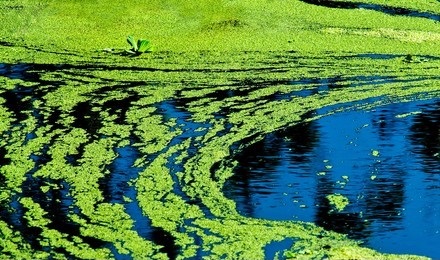With the intensification of eutrophication in water and the frequent occurrence of cyanobacterial blooms, the cyanobacterial growth process produces secondary metabolites cyanobacterial toxins, not only cause some aquatic and terrestrial organisms poisoning, but also result in fish, shrimp, edible algae, and other aquatic organisms accumulated in the body. Irrigated with polluted water, toxins will be accumulated in the soil, absorbed by crops, and transmitted through the food chain.

Since cyanobacterial toxins are harmful to humans at trace levels, there is an urgent need to detect cyanobacterial toxins in water samples, especially in lakes, rivers, and reservoirs that are used as drinking water sources. Therefore, Lifeasible has developed a set of economical, convenient, rapid, and accurate methods for the analysis and detection of cyanobacterial toxins, including bioassays, chromatographic methods, and immunoassays. Moreover, we offer the accurate analysis of cyanobacterial toxins in water at four levels, including screening, purification, identification, and quantitative analysis.
| Methods | Types | Features |
| Bioanalytical methods | Protein phosphatase 1/protein phosphatase 2A (PP1, PP2A) inhibition method | The algal toxin can inhibit activity of protein phosphatase (PP1, PP2A), using this biochemical property can establish a sensitive detection method for this type of toxin. This method is sensitive, reproducible, rapid, and simple. |
| Cytological test | Rat primary hepatocytes were prepared by a 2-step perfusion method, and the morphology of the cells was changed after several hours of treatment with MC-LR, and the sensitivity was as high as μg/L level. | |
| Chromatographic analysis method | High-performance liquid chromatography (HPLC) | The HPLC method is our preferred method for the detection of algal toxins. This method is accurate, sensitive, requires a small amount of sample, is reproducible, and can analyze different isomers simultaneously. |
| The HPLC-UV method for algal toxins is generally at the ng level, and the matrix-assisted laser desorption ionization/time of flight (MALDI-TOF) method for the identification of toxins in algal cells is at the μg/L level. | ||
| The HPLC-ultraviolet technique solves the limitation of the standard toxin requirement on the detection, and as long as the molecular weight of the detected toxin is known, qualitative analysis can be performed, and this method has been used by us for the identification and quantitative analysis of algal toxins in cyanobacterial water blooms. | ||
| Liquid chromatography-mass spectrometry (LC-MS) techniques also allow precise analysis of algal toxins, identifying the type of toxin by accurate molecular weight and structural information. | ||
| Solid-phase extraction coupled with HPLC-photodiode array detection (SPE-HPLC-PDA) method combines high sensitivity and accuracy, wide applicability, simple operation, fast analysis, good reproducibility and high sensitivity, more reliable characterization, and more accurate quantification, and can comprehensively analyze the contamination status of cyanobacterial toxins in complex water samples. | ||
| Gas chromatography (GC) and gas chromatography-mass spectrometry (GC-MS) | This method provides rapid, accurate, and sensitive determination of total algal toxins with detection limits generally at the ng level. It also allows the determination of toxin types and determination and analysis of isomers of algal toxins through accurate molecular weight and structural information. | |
| Thin-layer chromatography (TLC) | This method is one of the simplest qualitative methods. | |
| Capillary electrophoresis (CE) method | This method has the advantage of on-column enrichment, fast analysis, high efficiency, and has been automated. | |
| Two-dimensional nuclear magnetic resonance (2DNMR) method | This method is used to elucidate the chemical structure of algal toxin isomers and requires high sample demand and high purity. | |
| Immunoassay | Enzyme-linked immunosorbent assay (ELISA) | The quantitative methods of immunochemistry mainly include radioimmunoassay (RIA), indirect competitive ELISA (indirect cELISA), direct competitive ELISA (dcELISA), anti-idiotype antibody ELISA, and sandwich immunoassay. |
| Immunochromatographic assays | The immunochromatographic fluorescence quantification of algal toxins provides rapid (about 15 min) results. |
By optimizing sample pretreatment and chromatographic conditions, Lifeasible has established multiple assays for the simultaneous determination of multiple cyanobacterial toxins in water with wide applicability, simple operation, fast analysis, good reproducibility, and high sensitivity. If you would like a comprehensive understanding of cyanobacterial toxin contamination in eutrophic water and a variety of complex water samples, you can contact our staff at any time to get the latest solutions.
Lifeasible has established a one-stop service platform for plants. In addition to obtaining customized solutions for plant genetic engineering, customers can also conduct follow-up analysis and research on plants through our analysis platform. The analytical services we provide include but are not limited to the following:
Get Latest Lifeasible News and Updates Directly to Your Inbox
Adaptive Evolutionary Mechanism of Plants
February 28, 2025
Unraveling Cotton Development: Insights from Multi-Omics Studies
February 27, 2025